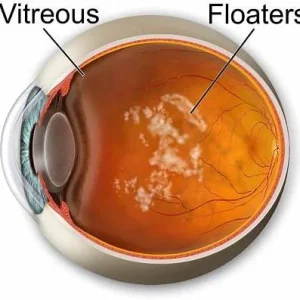If you’ve ever seen tiny specks, threads, or cobweb-like shapes drifting across your vision, especially when looking at a bright surface, you’ve likely encountered eye floaters. These shadowy forms are usually harmless but understanding their causes and when to seek help is essential for eye health.
Eye floaters appear as black or gray dots, squiggly lines, or cobweb-like strands that move with your eyes. They’re most noticeable against bright, plain backgrounds. Typically, they result from age-related changes in the vitreous humor, the jelly-like substance inside the eye. As the vitreous shrinks or liquefies, collagen fibers can clump together and cast shadows on the retina.
Beyond aging, several conditions can cause floaters. Posterior Vitreous Detachment (PVD) is common in people over 50. More serious causes include retinal tears or detachment, uveitis (inflammation), hemorrhaging from conditions like diabetic retinopathy, and complications from eye surgeries or medications. These can lead to a sudden increase in floaters and may require urgent care.

Seek medical attention if you experience a sudden increase in floaters, flashes of light, peripheral vision loss, or any pain. These signs could indicate retinal detachment, which can result in permanent vision loss if not treated promptly.
An eye doctor can diagnose floaters through exams like a dilated eye exam, ocular ultrasound, or optical coherence tomography (OCT). These help assess the retina and determine if treatment is necessary or if the floaters are benign.
Most floaters don’t need treatment and may fade over time. In severe cases, procedures like vitrectomy or laser vitreolysis may be considered, though both carry risks. Maintaining eye health through regular check-ups and a healthy lifestyle is key. Any sudden visual changes should be evaluated by an eye care professional immediately.




